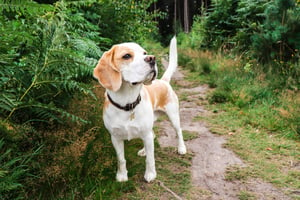Aggressive behavior in dogs is a serious problem that can lead to injury or even death. It is...
How to Stop Your Dog from Being Aggressive
Nobody likes an aggressive dog, but it’s a common problem that many dog owners face. Fortunately, there are steps that you can take to help your dog become calmer and friendlier. In this article, we’ll discuss the most effective strategies to help you stop your dog from being aggressive. We’ll also discuss the importance of understanding why your dog is acting this way and how to prevent further aggressive behaviour in the future.
Identifying the Cause of Your Dog’s Aggression
The first step in addressing aggressive behaviour in your dog is to identify the cause. There are a few common causes of aggression in dogs, including fear, anxiety, and territoriality. In some cases, aggression can be caused by medical issues, such as pain or hormonal imbalances. If your dog is displaying aggressive behaviour, it’s important to take them to the vet to rule out any physical causes.
It’s also important to understand the triggers for your dog’s aggression. Identifying the situations or people that trigger your dog’s aggressive behaviour can help you find ways to manage it.
Managing Your Dog’s Aggression
Once you’ve identified the cause of your dog’s aggression, you can start to take steps to manage it. Here are a few strategies that may help:
- Avoid punishing your dog for aggressive behaviour. Punishment can make your dog more fearful and anxious, which can worsen the problem.
- Teach your dog basic obedience commands. This will help you take control of the situation when your dog displays aggressive behaviour.
- Provide your dog with plenty of mental and physical stimulation. This can help reduce anxiety and stress that can lead to aggression.
- Use positive reinforcement. Reward your dog for good behaviour and ignore bad behaviour. This will help your dog learn what behaviour is and isn’t acceptable.
Preventing Future Aggressive Behaviour
Once you’ve started managing your dog’s aggression, you can start taking steps to prevent it from happening again. Here are a few tips that can help:
- Socialise your dog. Introduce your dog to new people and other animals so they can learn to be comfortable in new situations.
- Provide your dog with a safe space. Make sure your dog has a space that is just for them, such as a crate or bed, where they can retreat when they feel overwhelmed or unsafe.
- Be consistent. Establish a routine for your dog and stick to it. This will help your dog feel secure and understand what behaviour is expected of them.
- Be aware of your own behaviour. Your dog can pick up on your own emotions, so it’s important to stay calm and relaxed when around them.
Conclusion
Aggression in dogs can be a difficult problem to deal with, but it’s important to take steps to address it. Identifying the cause of your dog’s aggression and understanding the triggers can help you find ways to manage it. Taking steps to prevent aggressive behaviour in the future, such as providing your dog with plenty of mental and physical stimulation, can also help. With patience and consistency, you can help your dog become calmer and friendlier.



